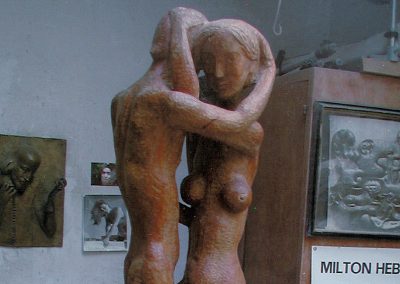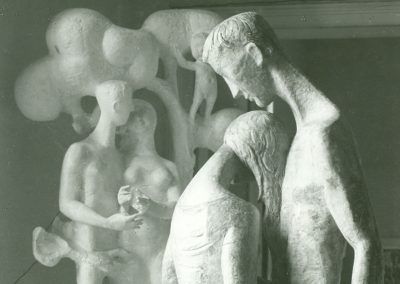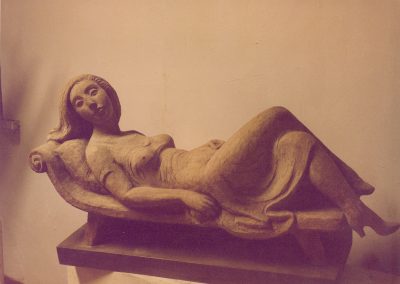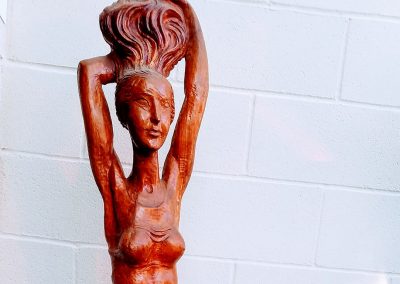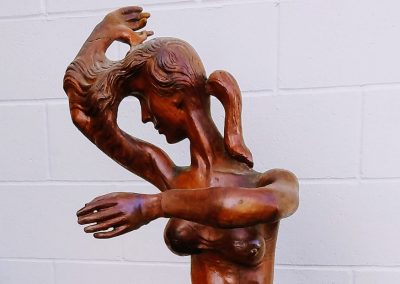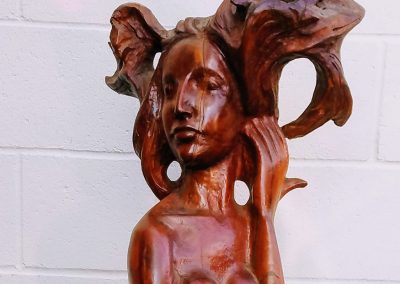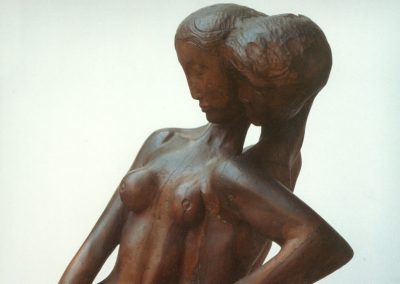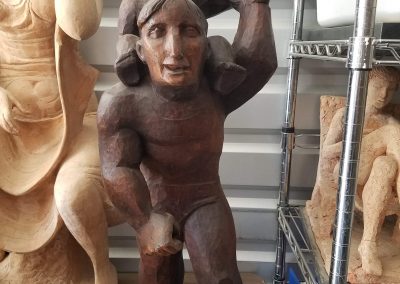WOOD
Wood has both advantages and drawbacks as a sculpture medium. Because of its fibrous strength, it can be carved more thinly and precisely than stone. For large compositions, two or more pieces of wood may be carved then joined by wood paste or joints created by the artist to fuse appendages together.
Olive wood. It is wood harvested from Olea europaea and O. capensis, the two types of Olive trees that originate from southern and eastern Mediterranean countries in Europe and Eastern Africa. Olive wood is used to carve sculpture because it is easier to carve than other woods and could be done accurately with simple hand tools. Also, it has a diverse variety of natural color and tonal depth, due to the structure of the grains.
Mahogany wood. It is a wood that is between a soft and a hard wood, mahogany is great for any wood carving technique, including chip carving. This wood always delivers aesthetically pleasing results.
Cherry wood. Cherry (Prunus serotina) is not as easy to work as the above two woods but it is a fine carving wood. It is classified as a moderately difficult to carve, but the reddish brown color and gentle figures make it an attractive wood to carve. Also, cherry wood shrinks a lot in drying, but is very stable afterwards.
Almond wood. Almond wood (Prunus amygdalus/ Prunus dulcis) is a hard and heavy wood to carve. The trunk grows slightly twisted and can be used for carving but presents challenges for the artist.
Click on an image to find out more

